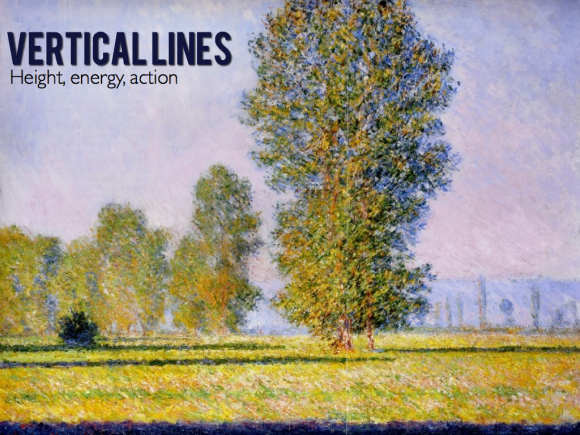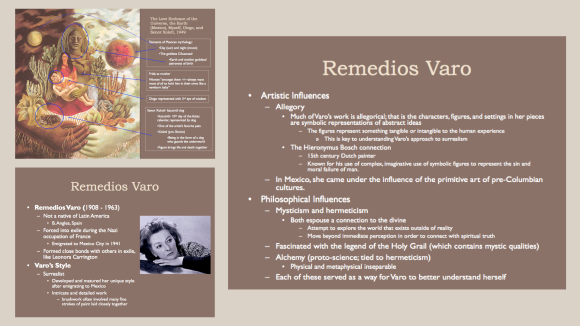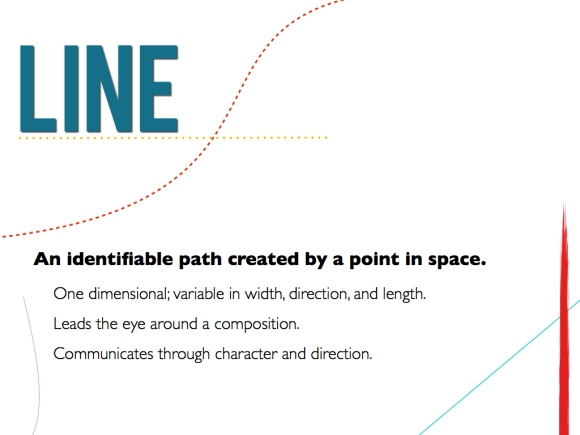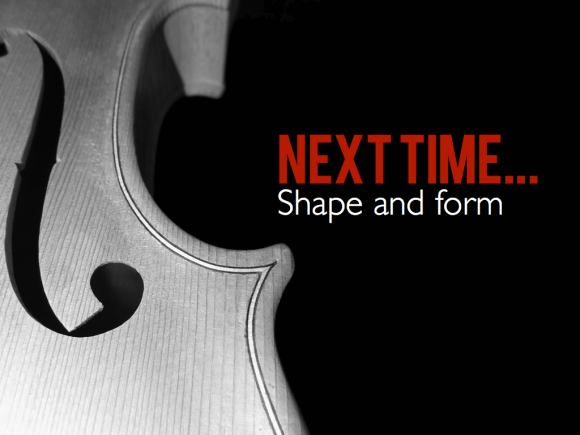I’m always looking for new projects to tweak. Ideally, I’d like to devote my time to non-education tweaks; I’d love to show that my abilities extend beyond lecture-based materials. But, those projects are hard to come by for someone who spends 23.5 hours a day working in education. I decided to take a look through my older decks (some a good six years old, from my days teaching English and humanities at Valencia College); I realized they were all in serious need of tweaking. Despite spending hours poring through material and searching for pictures, this is what I tortured my students with:

Pictures are clearly secondary here. The content is still most important--but what's the point of the slide during a lecture? Is it a note taking tool? A teleprompter?
To begin with, I started looking for a set of slides I’d created in Latin American humanities that I thought would be great to integrate into my class. The deck dealt with the elements and principles of art, which I briefly covered at the beginning of the course’s unit on visual art. The slides were meant to serve as a crash course in analyzing how a piece of art is constructed. Well, I looked for hours through my completely disorganized Mac, only to discover that the file was indeed gone. I admit that part of my desire to start with that deck was that it was a hundred times better than what you see above, so I thought my job would be easier. Slides or no, I think the elements of art is a good place to start, so the next few series of posts will feature the deck as it develops. Definitions and descriptions come from the J. Paul Getty Museum‘s excellent education section.
Let’s begin with line, the most basic structure of artistic expression.
Line is at its simplest the visualization of an objects trajectory through space. Line can create emotion, movement, and energy. Lines can also be grouped to create shapes, and to create perspective or the illusion of 3 dimensions on a 2 dimensional surface.

Monet in Sunset On the Seine in Winter uses horizontal lines to create a sense of depth and distance.

The use of vertical lines by Monet here indicates action, energy. Vertical lines are the domain of objects in motion. Note how horizontal lines here are used to give further depth to the landscape.
The intersection of horizontal and vertical lines creates shape.

Piet Mondrian is one of my favorites; his simple use of line creates structure and solidity combined with a vibrant energy.

Christina's World by Wyeth uses diagonal lines to create a sense of movement and to draw the eye to a particular focal point. The line of Christina's body, which is broken, unable to move on its own, indicates desire and longing.

Photographer Eugene Atget used curved lines to create an anthropomorphic composition in this photograph.
Consider line in your choice of images and your integration of text with these images. Consider images with horizontal lines to help indicate rest or repose; use images with vertical lines and vertical figures to convey action. Combine horizontal and vertical lines (and use clear grids) to create structure. Diagonal lines are lines in motion–use them to move your audience towards action, towards a conclusion. Curved lines are sensual and attractive. Use them to attract your audience to your core message.







